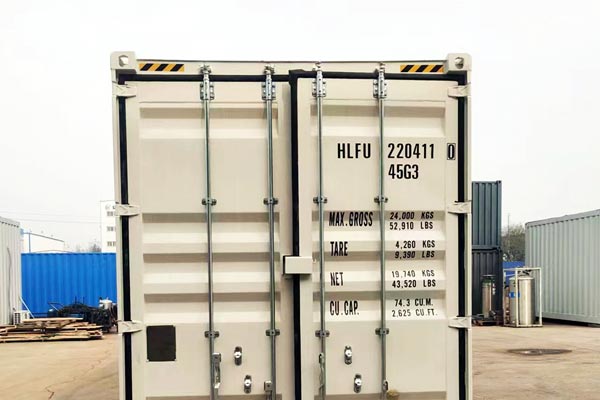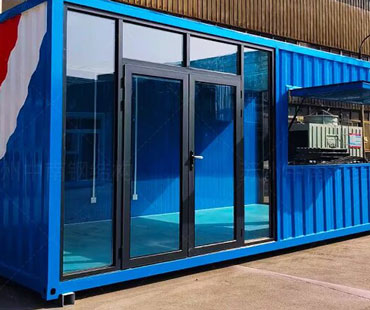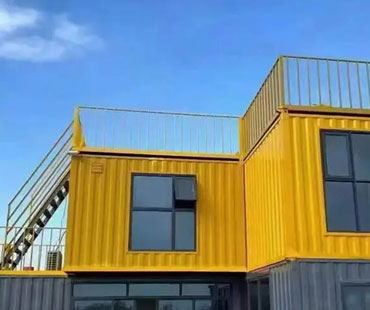In recent years, the concept of container homes has gained significant traction in China, reflecting a broader global trend towards innovative and sustainable housing solutions. As urbanization continues to accelerate, traditional housing models struggle to meet the demands of a growing population. Container homes emerge as a practical and imaginative alternative, offering a unique blend of affordability, sustainability, and versatility.
1.Urbanization and Housing Demand
China is experiencing rapid urbanization, with millions migrating to cities in search of better opportunities. According to the National Bureau of Statistics of China, urbanization rates have soared, pushing the demand for affordable housing to unprecedented levels. Traditional construction methods often fail to keep pace with this growth, leading to soaring real estate prices and housing shortages. Container homes present a solution that can be quickly deployed, addressing immediate housing needs without the lengthy construction timelines associated with conventional buildings.
2.Affordability and Cost-Effectiveness
One of the most compelling aspects of container homes is their affordability. Shipping containers, once used for transporting goods across oceans, can be repurposed into livable spaces at a fraction of the cost of traditional homes. In a country where housing prices are often prohibitively high, container homes offer an economical option for young professionals, families, and even rural residents seeking to relocate to urban areas. The reduced construction costs also promote financial accessibility, allowing more individuals to achieve homeownership.
3.Sustainability and Environmental Impact
As concerns about climate change and environmental degradation grow, the sustainability of housing solutions has become a priority. Container homes are inherently eco-friendly, as they repurpose materials that would otherwise contribute to waste. The construction process typically requires fewer resources than conventional building methods, resulting in a smaller carbon footprint. Additionally, many container home designs incorporate energy-efficient features such as solar panels and rainwater harvesting systems, further enhancing their sustainability.

4.Versatility and Customization
Container homes are exceptionally versatile, able to adapt to various living situations and preferences. They can be stacked, combined, or modified to create unique layouts tailored to individual needs. This flexibility makes them suitable for a range of uses, from permanent residences to vacation homes, student housing, and even temporary shelters in disaster-stricken areas. In urban settings, container homes can be creatively integrated into existing landscapes, contributing to a dynamic architectural environment.
5.Government Support and Policy Initiatives
The Chinese government has recognized the potential of container homes as a viable housing solution and has begun to support their development. Initiatives aimed at promoting sustainable building practices and affordable housing solutions have paved the way for more container home projects. Local governments in cities like Beijing, Shanghai, and Shenzhen are exploring policies that encourage the use of container homes in urban planning, integrating them into community development projects.
6.Challenges and Considerations
Despite their many advantages, container homes face several challenges. Zoning laws and building regulations can hinder their deployment, as many areas have strict guidelines regarding residential construction. Additionally, while container homes are cost-effective, the initial investment can still be significant for some individuals. Ensuring proper insulation and ventilation is crucial, especially in regions with extreme weather conditions. As the market evolves, addressing these challenges will be vital for the widespread acceptance of container homes.
7.The Future of Container Homes in China
As the demand for innovative and sustainable housing solutions continues to grow, the future of container homes in China looks promising. With ongoing advancements in design technology and construction methods, container homes are likely to become an integral part of the housing landscape. Their ability to meet the needs of a diverse population while minimizing environmental impact makes them a compelling option for modern living.
In conclusion, the rise of container homes in China represents a transformative approach to housing, combining affordability, sustainability, and innovation. As urban challenges persist, these homes offer a glimpse into a future where creative solutions can effectively address the needs of a changing society. With continued support from government initiatives and a growing acceptance of alternative living spaces, container homes are poised to play a significant role in shaping the future of urban living in China.


